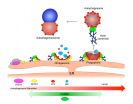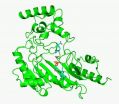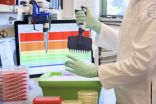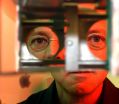(Press-News.org) Adult neural stem cells, which are commonly thought of as having the ability to develop into many type of brain cells, are in reality pre-programmed before birth to make very specific types of neurons, at least in mice, according to a study led by UC San Francisco researchers.
"This work fundamentally changes the way we think about stem cells," said principal investigator Arturo Alvarez-Buylla, UCSF professor of neurological surgery, Heather and Melanie Muss Endowed Chair and a principal investigator in the UCSF Brain Tumor Research Center and the Eli and Edythe Broad Center of Regeneration Medicine and Stem Cell Research. "It may be unwelcome news for those who thought of adult neural stem cells as having a wide potential for neural repair. Instead, it looks as if that potential is narrowed down very early during embryonic development. It's almost as if the embryo is planning for the future."
The study was published on June 18 in Cell.
Adult stem cells are found in organ systems throughout the body. Most are undifferentiated, meaning they have the potential to develop into several different cell types for tissue growth and repair. Skin, for example, regenerates through the action of skin stem cells, while the cells lining the large and small intestine are continually derived from intestinal stem cells.
Most adult stem cells are also self-renewing. When a stem cell divides into two, one daughter cell remains as an undifferentiated stem cell, thereby preserving that cell's potential for regeneration and repair.
"People have assumed that adult neural stem cells are similarly undifferentiated and self-renewing," said Alvarez-Buylla, whose lab was the first to identify neural stem cells more than 20 years ago. "We did not see that."
In mouse brains, as in human brains, adult neural stem cells reside on the walls of cavities called ventricles, which are filled with cerebrospinal fluid. Using sophisticated DNA tagging techniques, Alvarez-Buylla and his team traced the development of mouse adult neural stem cells back to their embryonic progenitors. They found that most neural stem cells are produced when the mouse embryo is between 13 and 15 days old, "quite early in embryonic brain development," said Alvarez-Buylla, and then remain quiescent until reactivated later in life.
Moreover, they found that the precise type of neuron that each adult neural stem cell can later develop into is determined by its location on the ventricle wall. In turn, that location is fixed even earlier in embryonic development, as early as 11 days.
"So, in this study, we were met with a series of surprises," Alvarez-Buylla said. "Rather than being continually self-renewing, these stem cells are produced at one time during development and then sit quietly until they are reactivated. And when they are reactivated, it turns out that their role in the brain has been partly already determined before birth."
The researchers had another surprise, having to do with the relationship between embryonic stem cells and adult stem cells.
Through DNA tagging, the scientists found that the mouse adult neural stem cells they studied are derived from embryonic neural stem cells that produce neurons in entirely different parts of the brain.
"This means that, somehow, these cells go through a period of neuron production for the embryonic brain and then switch to a different mode and produce cells that get set apart to become adult neural cell progenitors," said Alvarez-Buylla. "What is incredible is that the neurons that are produced in the embryo are extremely different than the neurons produced for the adult. So somehow, these embryonic stem cells are switching modes and producing entirely new cell types. This finding has the potential to fundamentally change our picture of the relationship between embryonic and adult stem cells."
Alvarez-Buylla cautioned that, as with any research study involving mice, the implications for human biology are indirect at best. "However, mouse brains have long been accepted as excellent basic research models for the human brain," he said.
Alvarez-Buylla also noted that the paper has possible implications for the success of human stem cell therapy in the brain and nervous system.
"One implication for humans has to do with the fact that so many different progenitor cells are needed to make the different types of neurons," he said. "While it is true that we are learning how to reprogram adult stem cells to make different types of neurons, this work tells us that if we don't understand the embryology of the brain, going back to the origins of specific nerve cell types, the likelihood of our being able to use stem cell therapy to repair brain injury is very low."
INFORMATION:
The lead author of the study is Luis C. Fuentealba, PhD, who was on the staff of the Alvarez-Buylla laboratory at the time of the study. Co-authors are Santiago B. Rompani, PhD, of Harvard University, Jose I. Parraguez, Kirsten Obernier, PhD, and Ricardo Romero of UCSF, and Constance L. Cepko, PhD, of Harvard.
The study was supported by funds from the National Institutes of Health, the John G. Bowes Research Fund and the Howard Hughes Medical Institute.
About UCSF: UC San Francisco (UCSF) is a leading university dedicated to promoting health worldwide through advanced biomedical research, graduate-level education in the life sciences and health professions, and excellence in patient care. It includes top-ranked graduate schools of dentistry, medicine, nursing and pharmacy, a graduate division with nationally renowned programs in basic, biomedical, translational and population sciences, as well as a preeminent biomedical research enterprise and two top-ranked hospitals, UCSF Medical Center and UCSF Benioff Children's Hospital San Francisco. Please visit http://www.ucsf.edu.
We can alter our facial features in ways that make us look more trustworthy, but don't have the same ability to appear more competent, a team of New York University psychology researchers has found.
The study, which appears in the Personality and Social Psychology Bulletin, a SAGE journal, points to both the limits and potential we have in visually representing ourselves--from dating and career-networking sites to social media posts.
"Our findings show that facial cues conveying trustworthiness are malleable while facial cues conveying competence and ability are significantly ...
Want to lose abdominal fat, get smarter and live longer? New research led by USC's Valter Longo shows that periodically adopting a diet that mimics the effects of fasting may yield a wide range of health benefits.
In a new study, Longo and his colleagues show that cycles of a four-day low-calorie diet that mimics fasting (FMD) cut visceral belly fat and elevated the number of progenitor and stem cells in several organs of old mice -- including the brain, where it boosted neural regeneration and improved learning and memory.
The mouse tests were part of a three-tiered ...
Last June, in the early days of the Ebola outbreak in Western Africa, a team of researchers sequenced the genome of the deadly virus at unprecedented scale and speed. Their findings revealed a number of critical facts as the outbreak was unfolding, including that the virus was being transmitted only by person-to-person contact and that it was picking up new mutations through its many transmissions.
While public health officials now believe the worst of the epidemic is behind us, it is not yet over, and questions raised by the previous work still await answers.
To ...
PHILADELPHIA - Several well-known neurodegenerative diseases, such as Lou Gehrig's (ALS), Parkinson's, Alzheimer's, and Huntington's disease, all result in part from a defect in autophagy - one way a cell removes and recycles misfolded proteins and pathogens. In a paper published this week in Current Biology, postdoctoral fellow David Kast, PhD, and professor Roberto Dominguez, PhD, and three other colleagues from the Department of Physiology at the Perelman School of Medicine at the University of Pennsylvania, show for the first time that the formation of ephemeral compartments ...
University of California San Francisco scientists have identified characteristics of a family of daughter cells, called MPPs, which are the first to arise from stem cells within bone marrow that generate the entire blood system. The researchers said the discovery raises the possibility that, by manipulating the fates of MPPs or parent stem cells, medical researchers could one day help overcome imbalances and deficiencies that can arise in the blood system due to aging or in patients with specific types of leukemia.
Similar imbalances can render patients vulnerable immediately ...
PORTLAND, Ore. -- Advancing the field of structural biology that underpins how things work in a cell, researchers have identified how proteins change their shape when performing specific functions. The study's fresh insights, published online in the journal Structure, provide a more complete picture of how proteins move, laying a foundation of understanding that will help determine the molecular causes of human disease and the development of more potent drug treatments.
Though it has long been recognized that proteins are not static, for more than 30 years, scientists' ...
The secret to preventing HIV infection lies within the human immune system, but the more-than-25-year search has so far failed to yield a vaccine capable of training the body to neutralize the ever-changing virus. New research from The Rockefeller University, and collaborating institutions, suggests no single shot will ever do the trick. Instead, the scientists find, a sequence of immunizations might be the most promising route to an HIV vaccine.
Scientists have thought for some time that multiple immunizations, each tailored to specific stages of the immune response, ...
BOSTON, June 18 -- An analysis of five families has revealed a previously unknown genetic immunodeficiency, says an international team led by researchers from Boston Children's Hospital. The condition, linked to mutations in a gene called DOCK2, deactivates many features of the immune system and leaves affected children open to a unique pattern of aggressive, potentially fatal infections early in life.
As the researchers -- led by Kerry Dobbs and Luigi Notarangelo, M.D., of Boston Children's Division of Allergy and Immunology -- reported today in the New England Journal ...
Musicians don't just hear in tune, they also see in tune.
That is the conclusion of the latest scientific experiment designed to puzzle out how the brain creates an apparently seamless view of the external world based on the information it receives from the eyes.
"Our brain is remarkably efficient at putting us in touch with objects and events in our visual environment, indeed so good that the process seems automatic and effortless. In fact, the brain is continually operating like a clever detective, using clues to figure out what in the world we are looking at. And ...
A trio of studies being published today in the journals Science and Cell describes advances toward the development of an HIV vaccine. The three study teams all demonstrated techniques for stimulating animal cells to produce antibodies that either could stop HIV from infecting human cells in the laboratory or had the potential to evolve into such antibodies. Each of the research teams received funding from the National Institute of Allergy and Infectious Diseases (NIAID), part of the National Institutes of Health.
In one study, published in Science, researchers demonstrate ...




